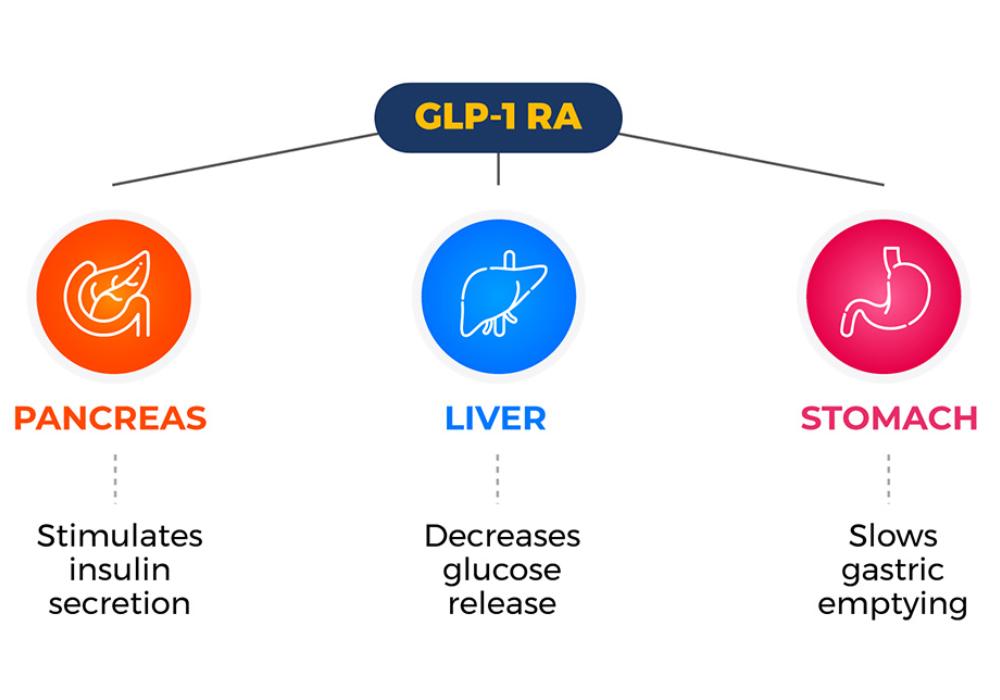Semaglutide, a medication initially developed for managing type 2 diabetes, has gained attention for its efficacy in weight loss. As the rise in childhood obesity becomes an increasingly pressing public health issue, there has been growing interest in whether semaglutide can be safely used for children or teenagers struggling with obesity or other related conditions. In this article, we will explore the potential benefits and risks of semaglutide use in younger populations, as well as the current state of research and clinical guidelines surrounding this treatment.
Understanding Semaglutide
Semaglutide is a GLP-1 receptor agonist, which means it mimics a natural hormone in the body that helps regulate blood sugar levels, reduces appetite, and promotes satiety. It was first approved by the FDA for managing type 2 diabetes under the brand name Ozempic. More recently, semaglutide has also been approved for weight loss under the brand name Wegovy, for individuals struggling with obesity or those who are overweight with at least one weight-related health condition, such as hypertension or type 2 diabetes.
Semaglutide works by stimulating the GLP-1 receptor, which leads to a reduction in hunger signals, slowing of gastric emptying, and improved insulin sensitivity. These effects make semaglutide highly effective for adults, and clinical trials have demonstrated its success in weight management, leading to FDA approval for its use as an anti-obesity medication.
Can Semaglutide Be Used in Children and Teens?
Semaglutide is primarily approved for use in adults, but the question of whether it can be used in children or teenagers has become increasingly relevant as childhood obesity rates rise. In recent years, the FDA has expanded the indication for semaglutide, and clinical trials have been conducted to assess its safety and efficacy in younger populations.
As of now, semaglutide is approved for use in children aged 12 and older for the treatment of obesity under the brand name Wegovy. In a clinical trial involving adolescents, semaglutide demonstrated a significant reduction in body weight. The study found that those who received the medication experienced an average weight loss of around 14.9% of their total body weight, a result that was significantly better than those who received a placebo. This trial, which involved adolescents aged 12 to 17, has paved the way for the use of semaglutide as a treatment option for obesity in this age group.
However, it’s important to note that semaglutide has not yet been approved for weight loss in children under the age of 12, and its use in younger children remains untested and potentially unsafe. Additionally, while the trial results for adolescents are promising, semaglutide’s long-term effects on growing bodies and its safety profile in younger populations are still not fully understood.
Risks and Side Effects of Semaglutide in Children and Teens
Although semaglutide can be highly effective in treating obesity and related conditions, like any medication, it comes with risks and side effects. In clinical trials, the most common side effects of semaglutide were gastrointestinal in nature, including nausea, vomiting, diarrhea, and constipation. These side effects were typically mild to moderate and diminished over time.
In children and teenagers, some additional considerations must be taken into account. The effects of semaglutide on growth and development, especially during the critical years of adolescence, are not fully known. Adolescence is a period of rapid physical and hormonal changes, and there is concern that semaglutide’s effects on appetite and metabolism may interfere with normal growth patterns. Moreover, there is limited research on how semaglutide might affect the mental health of children and teens, especially considering the psychological challenges often associated with obesity and body image in younger populations.
It’s also important for healthcare providers to assess whether semaglutide is the appropriate treatment for each individual. In some cases, other lifestyle interventions, such as diet modification and physical activity, may be more appropriate as first-line treatments. Semaglutide should be prescribed as part of a comprehensive weight management plan that includes behavior changes, counseling, and ongoing monitoring.
How Does Semaglutide Compare to Other Treatments for Obesity in Children and Teens?
In addition to semaglutide, there are other pharmacological options available for treating obesity in children and teens. One such drug is liraglutide (brand name Saxenda), another GLP-1 receptor agonist, which is approved for weight management in children aged 12 and older. Liraglutide has shown similar efficacy to semaglutide, with significant weight loss reported in clinical trials. However, semaglutide appears to be more effective than liraglutide in terms of weight loss outcomes, making it a more favorable option for many patients.
Other medications approved for weight management in children and teens include orlistat, which works by inhibiting fat absorption in the intestines, and certain medications like phentermine, although these tend to be used more sparingly due to concerns about their long-term safety.
In many cases, however, pharmacotherapy should only be one part of a broader weight management strategy. Diet modification, exercise, and behavioral therapies should form the core of any treatment plan. Furthermore, healthcare providers should emphasize the importance of healthy lifestyle choices and family involvement to support long-term success.
Can You Buy Semaglutide or HGH in the UK?
If you’re looking to manage your weight or support your overall health with medications like semaglutide, it’s important to consult a healthcare provider. Buy Semaglutide UK through a legitimate and licensed source after discussing with your doctor. The medication should be prescribed and monitored by a healthcare professional to ensure it’s safe and effective for you or your child.
Similarly, for those interested in human growth hormone (HGH) therapy, buy HGH UK from a trusted source. HGH is sometimes used in specific medical contexts to treat growth deficiencies, but it should always be prescribed and monitored by a healthcare provider to avoid misuse and potential side effects.
Conclusion
The use of semaglutide in children and teens has shown promising results in clinical trials, particularly for the treatment of obesity in adolescents aged 12 and older. The approval of semaglutide for this age group marks an important step in addressing the growing issue of childhood obesity and related health problems. However, while the drug appears effective, it is not without risks, and long-term safety data in younger populations is still limited. Therefore, semaglutide should be used cautiously and as part of a comprehensive weight management program that includes lifestyle changes and behavioral support.
As research continues to evolve, healthcare providers will be better equipped to make informed decisions about the use of semaglutide in children and teens. Parents should consult with healthcare professionals to determine the best treatment options for their children and ensure that the benefits outweigh the potential risks.





